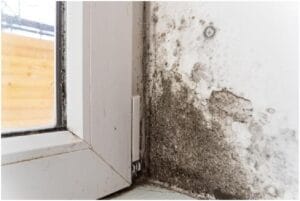There are many different species and varieties of mold that can invade our homes and businesses. We’ve all heard of the dreaded black mold, but what else can be found in your property? Different molds can cause different side effects, and can range from minor to severe, depending on what type of mold you are exposed to. Mold is classified into 3 categories:
- Allergenic mold, which creates allergy like symptoms including itchy, watery eyes, throat irritation, runny nose, and rashes
- Pathogenic mold is responsible for causing infections and is particularly harmful to those with weakened immune systems of underlying medical conditions
- Toxigenic mold is the most dangerous of the three, and can even be fatal under the right circumstances. Side effects include hormonal disruption, weakened immune systems, and damage to your central nervous system
No matter what kind of mold you are dealing with, exposure is never a good thing. It is important to contact a mold removal specialist right away to prevent mold from spreading throughout your property and causing you discomfort and illness. Here are the most common types of mold that may be found in your residential or commercial property.
Alternaria
Alternaria is considered one of the most common of the allergenic molds. This mold can spread rapidly like wild fire so it should always be treated as soon as possible. This mold can be identified by its velvety texture and is often brown or green. It is most often found in bathrooms or areas of the home or business that were exposed to water damage. The longer you are exposed to Alternaria, the higher the risk you will develop more serious symptoms such as upper respiratory tract issues similar to asthma.
Black Mold Also Known as Stachybotrys
Black mold is the most commonly known type of mold, although its name can be misleading. Black mold can be seen in other dark colors such as green and has a slimy texture. Black mold grows well on wood, cardboard, and other paper products. Black mold is considered a toxigenic mold, and should be taken very seriously and removed immediately to prevent the risk of serious health risks.
Aspergillus
Aspergillus is unique as it can be classified as allergenic or toxigenic, based on its environment. There are over 200 types of this kind of mold, making it pop up in all shapes, sizes, colors, and textures. This mold can potentially create and expose you to carcinogens.
Trichoderma
Trichoderma creates an enzyme that can be devastating to wood, textiles, and paper products, and is generally found on carpets, wallpaper, and AC filters. This type of mold can create mycotoxins, and is therefore classified as a toxigenic mold. Its physical appearance is typically white with green spots and fuzzy.
Cladosporium
Cladosporium is an allergenic mold that causes rashes and other allergy symptoms and typically grows on textiles and fabrics, under floorboards, and in pantries and cupboards. It can grow in either hot or cold climates and is usually seen as an olive green or brown in color.
Though its true that some mold can be more harmful than others, every sort of mold should be taken seriously. Don’t allow mold to make your space uncomfortable and affect your health negatively. If you know or suspect there is mold in your property, contact Vortex Restoration about mold removal and mold remediation services right away.




